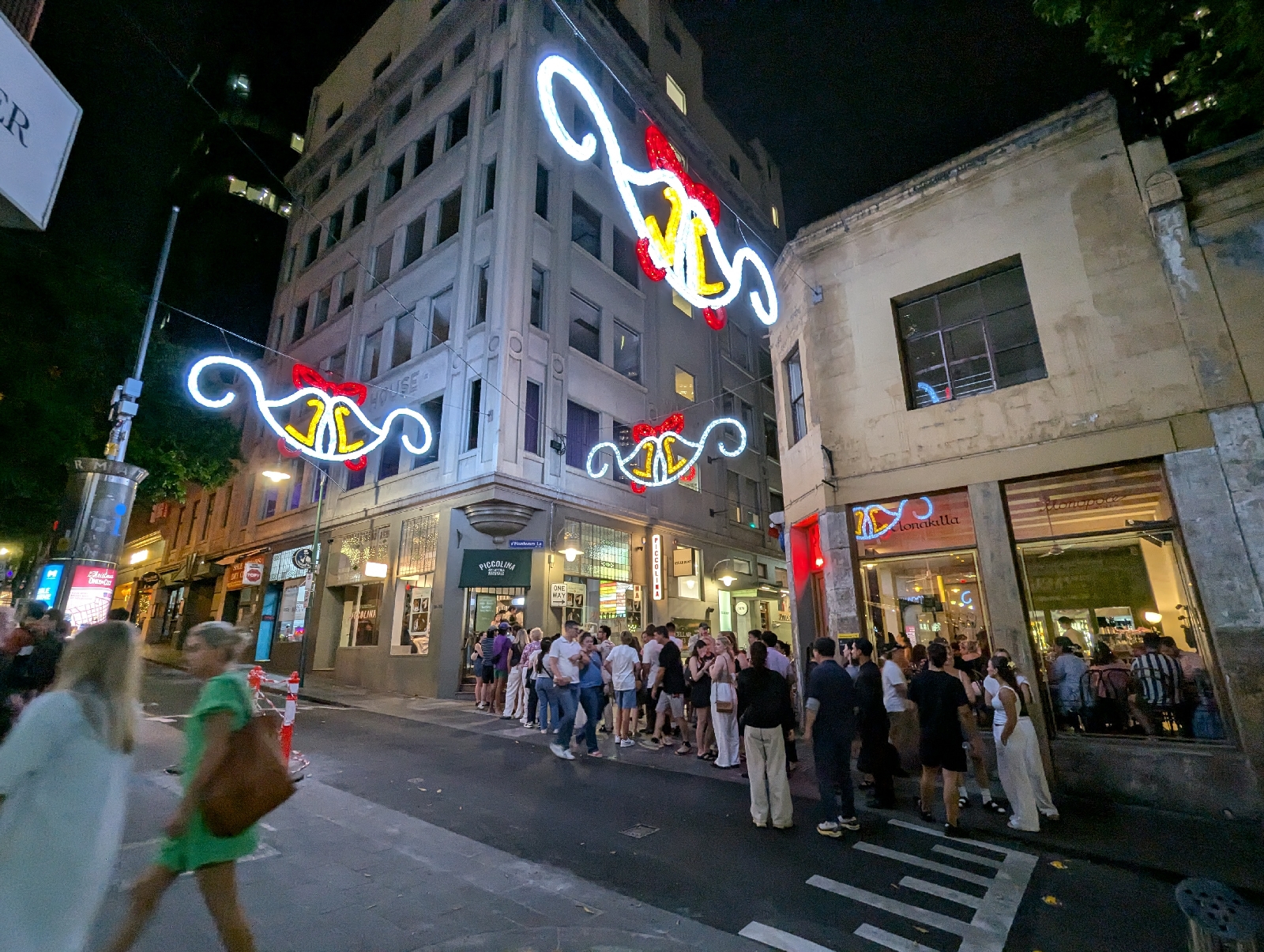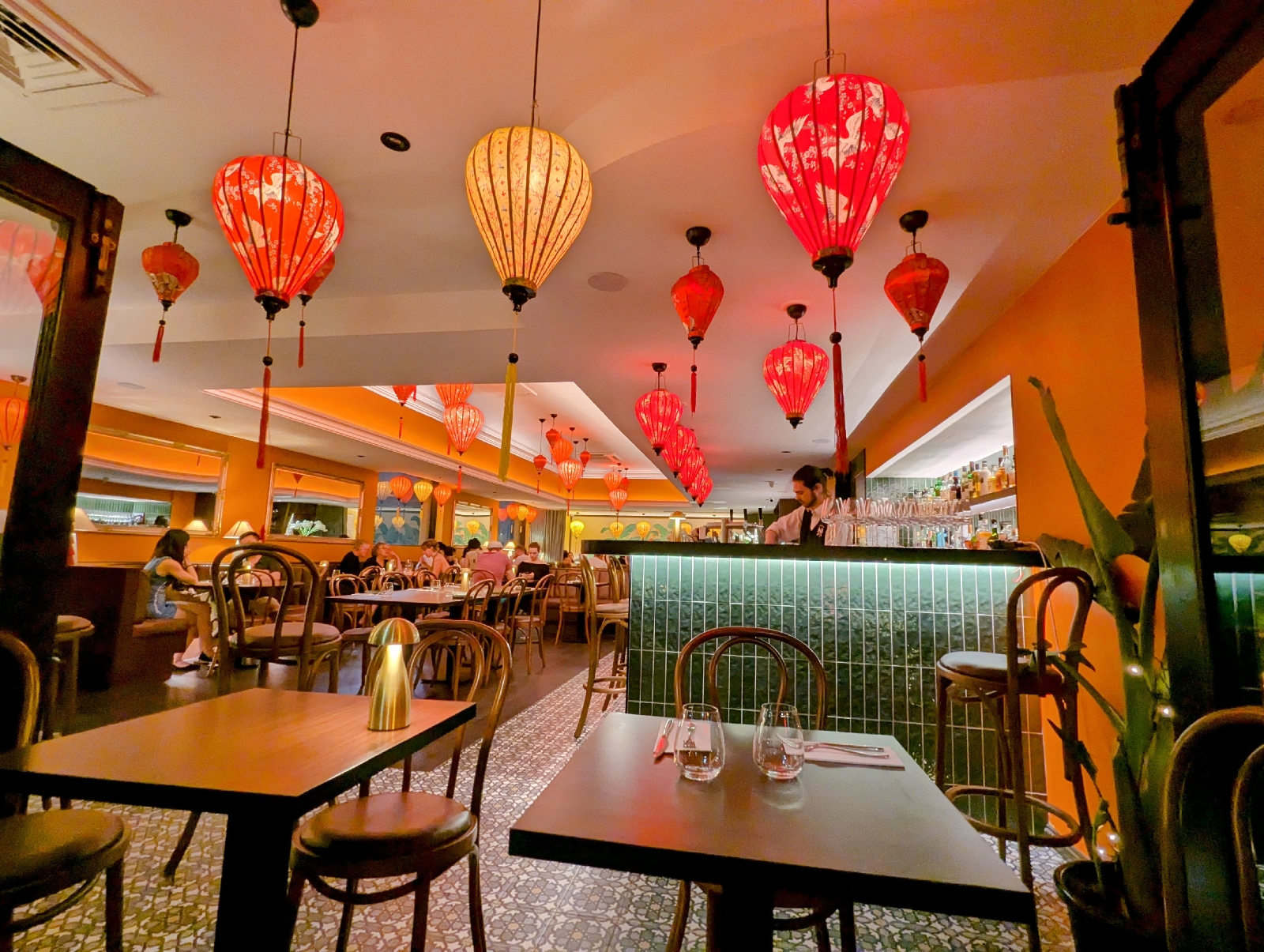A restaurant chain well-known in Hong Kong called Tamjai specialising in mixian (a type of rice noodles) has been talking about expanding to Australia for several years. The vision has finally materialised when the first Australian branch was open in Melbourne CBD in 28th November. Wife, baby and I were already keen to try it out on its second day of opening.
說了多年的譚仔米線往澳洲擴張,到11月28日譚仔在澳洲的首家分店終於在墨爾本市區,一家三口在開張第二天便貪新鮮試了。We waited for 1 1/2 hours since 19:00 before we got a table. Many passers-by were amazed by this queue and a lady even asked what the queue was about and whether it was indeed worth the wait. She said that the length of the queue had not changed since she last walked by 4 hours earlier!
由黃昏7點排隊等了一個半小時才可內進,其間不少行人對人龍嘖嘖稱奇,甚至有西人婦人說人龍跟4小時前一樣長,問我排隊的目的和米線值不值得吃。
Customers can customise their own mixian noodles by choosing the soup base and ingredients. At the base price, 2 ingredients excluding the more expensive, special ones are included. The special ones namely wagyu beef slices and abalone turned out to be nothing special and underwhelming, while the standard traditional ingredients were already very satisfying.
看過一條影片介紹和牛和鮑魚是澳洲店的特色配料,所以我們便點了嚐嚐,卻覺得不外如是,有點令人失望,反而不夠傳統的腩肉、貢丸等好。奶茶茶底還算不錯,而湯底沒有中國國內也帶到澳洲的重口味,的確比較適合港人口味。
The taste of the noodles was indeed very suited to the Hong Kong palate, but the whole dining experience was still rather different from Hong Kong. The Tamjai service staff in Hong Kong is famed for speaking their own 'dialect'/tone of Cantonese due to the high proportion of staff originally from mainland Chinese speaking with Cantonese accents different from the standard Hong Kong tone, but in Australia English took its place and QR code ordering was offered in English only - we needed the printed menus to work out the English names of some common ingredients that we only knew in Chinese. The long wait time was in a large part due to the much slower pace of dining in Australia compared to Hong Kong, leading to a slow turnover of tables. This is yet another example of adaptation of international brands to the local market.
口味以外,整個進餐體驗始終跟香港有差別:侍應不是「譚仔姐姐」,聽不到「譚仔話」之餘,手機下單更是英文顯示,如沒有紙本餐牌,跟本不會查得出pork and mushroom ball就是貢丸!至於排隊需時這麼長,很大的原因是其他顧客進餐速度慢(真的比香港慢很多),國際品牌要本地/本土化,是必須經歷的過程。
We had a stroll in nearby streets after our meal. It was already well past 21:00 and normally all retail shops would have closed, but the department stores and big shopping centers were still open possibly because of the Black Friday sales. We walked past an ice cream shop with a queue that could rival the one for Tamjai and we wondered why people only showed surprise for Tamjai because it wasn't the only queue for food in the CBD!
飯後在店附近的街道逛逛,那時已是9點後,通常商店已關門了,但可能因為是黑色星期五購物日,百貨公司和大商場仍營業,街上人流亦因此仍然熱鬧。路經一家冰淇淋店,其人龍可和譚仔媲美,所以路人可不必為譚仔驚訝啊!
The lane next to the ice cream shop (Hardware Lane) was still abuzz at 22:00 and filled with outdoor diners. We could almost see signs of Spain where outdoor dining into late night is the norm. We certainly did not expect a lively scene - perhaps Black Friday and warm weather helped!
冰淇淋店旁的街,到10點仍坐滿進餐的人,情景和西班牙越夜越熱鬧的露天飯局媲美,也應該讓香港一眾飲食業老闆羨慕不已!
There were a couple of restaurants with notable decors in that area. The cabins at the Japanese restaurant were indeed quite close to actual Japanese style.
另一帶有兩家餐食肆的裝潢挺特別,日式料理店的戶外席跟日本是有點像的。
The liveliness was not confined to the CBD. At the station where we alighted from the train from the CBD, we could hear chatter and laughter from a rooftop bar close by, while the restaurants in the local pedestrian zone had no signs of closing with several outdoor tables still occupied. It is not a common sight in the suburbs.
夜繽紛到回家途中還沒完,在我們下車的站,附近不只天台酒店仍傳出談笑聲,連行人區的餐廳戶外席仍坐了數席顧客,沒關店的跡象,在遠離市中心的地方是難得一見的!
It was eye-opening for us to experience the atmosphere of Friday evening!
這是個令我們開眼界的星期五晚上。








Comments